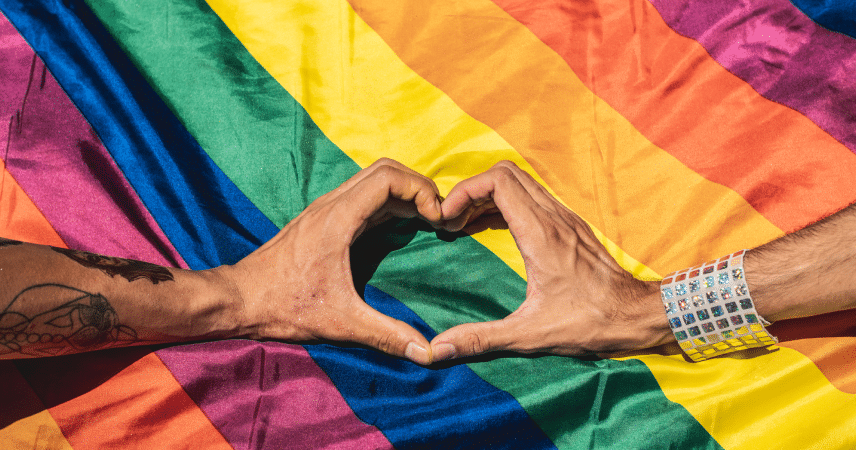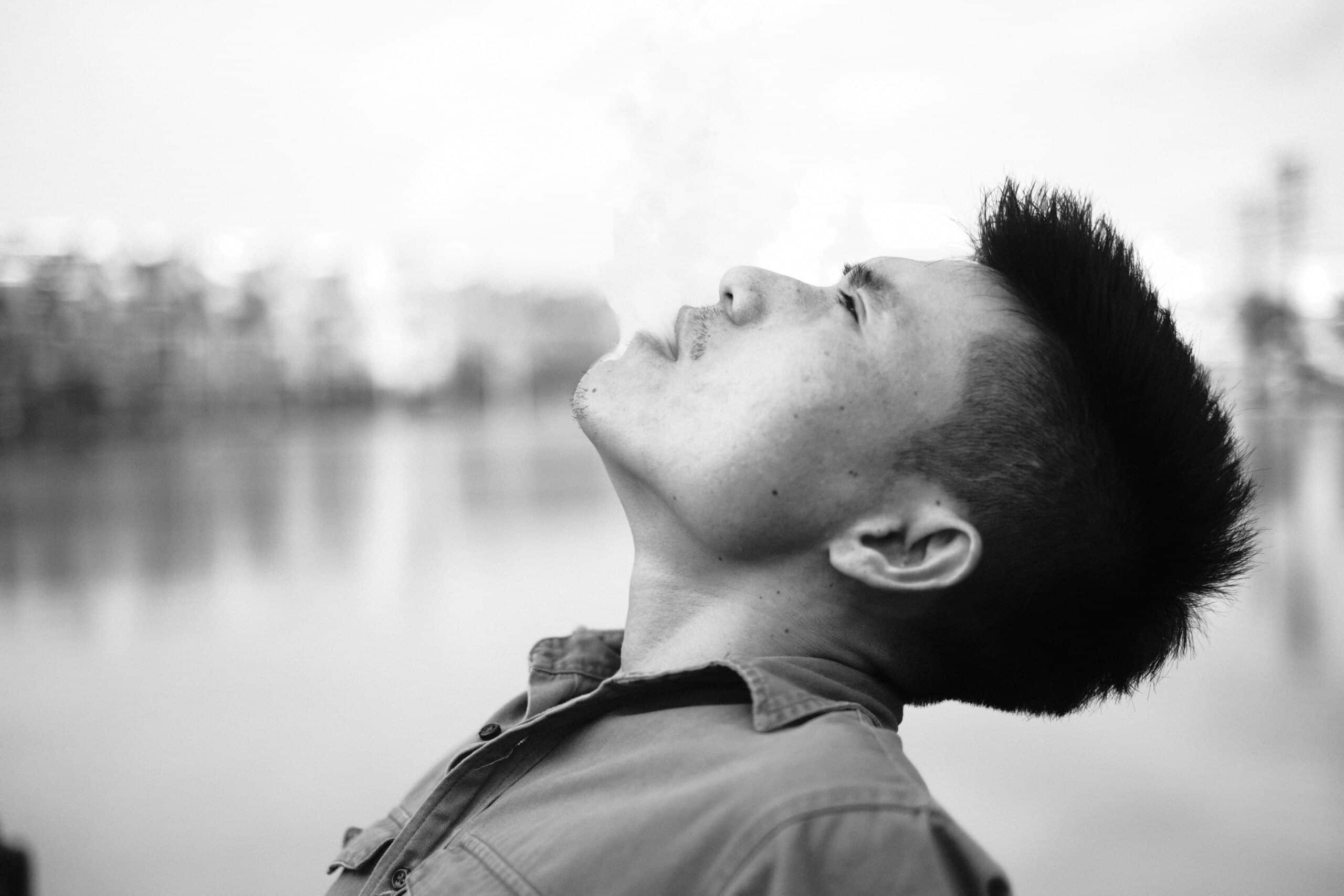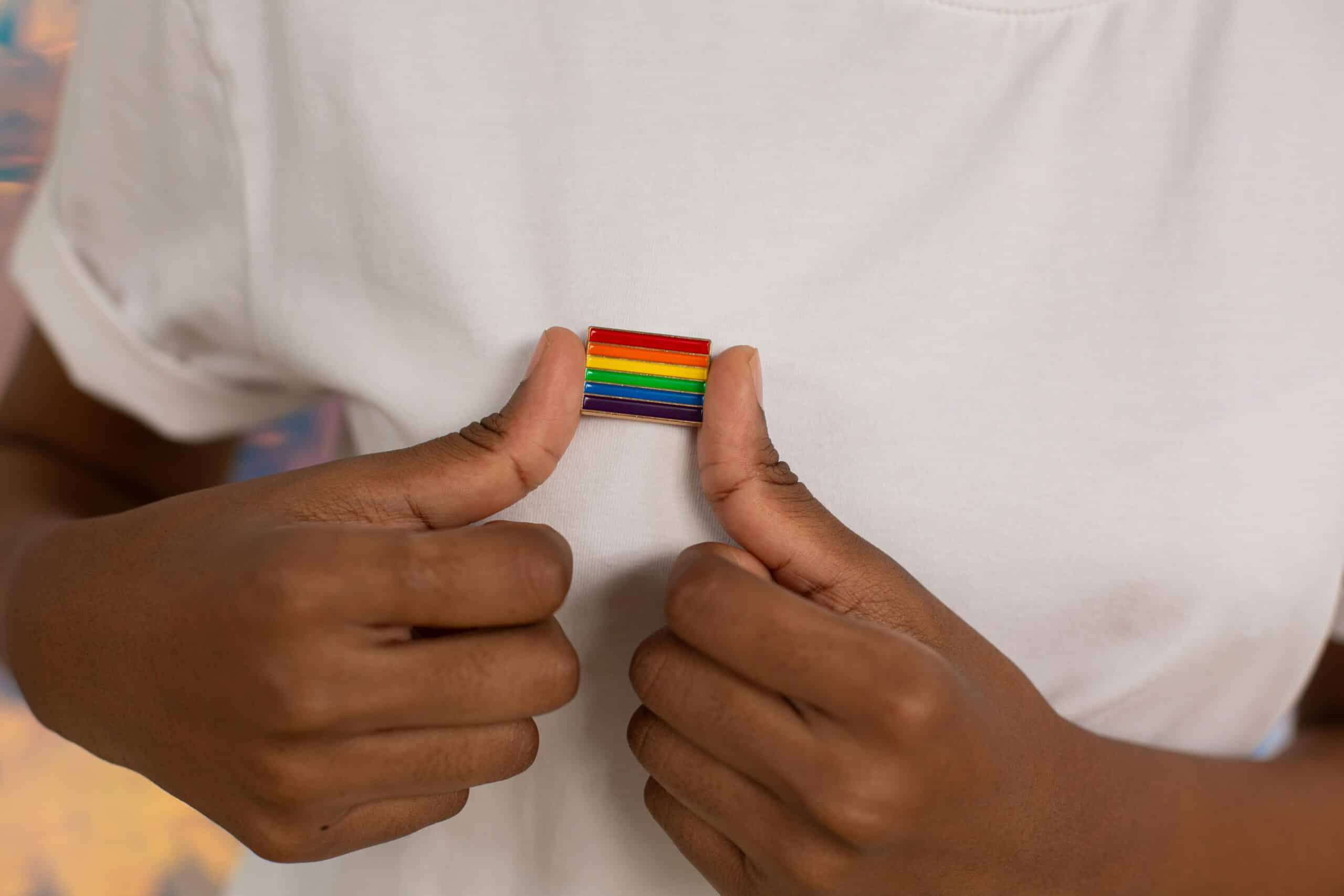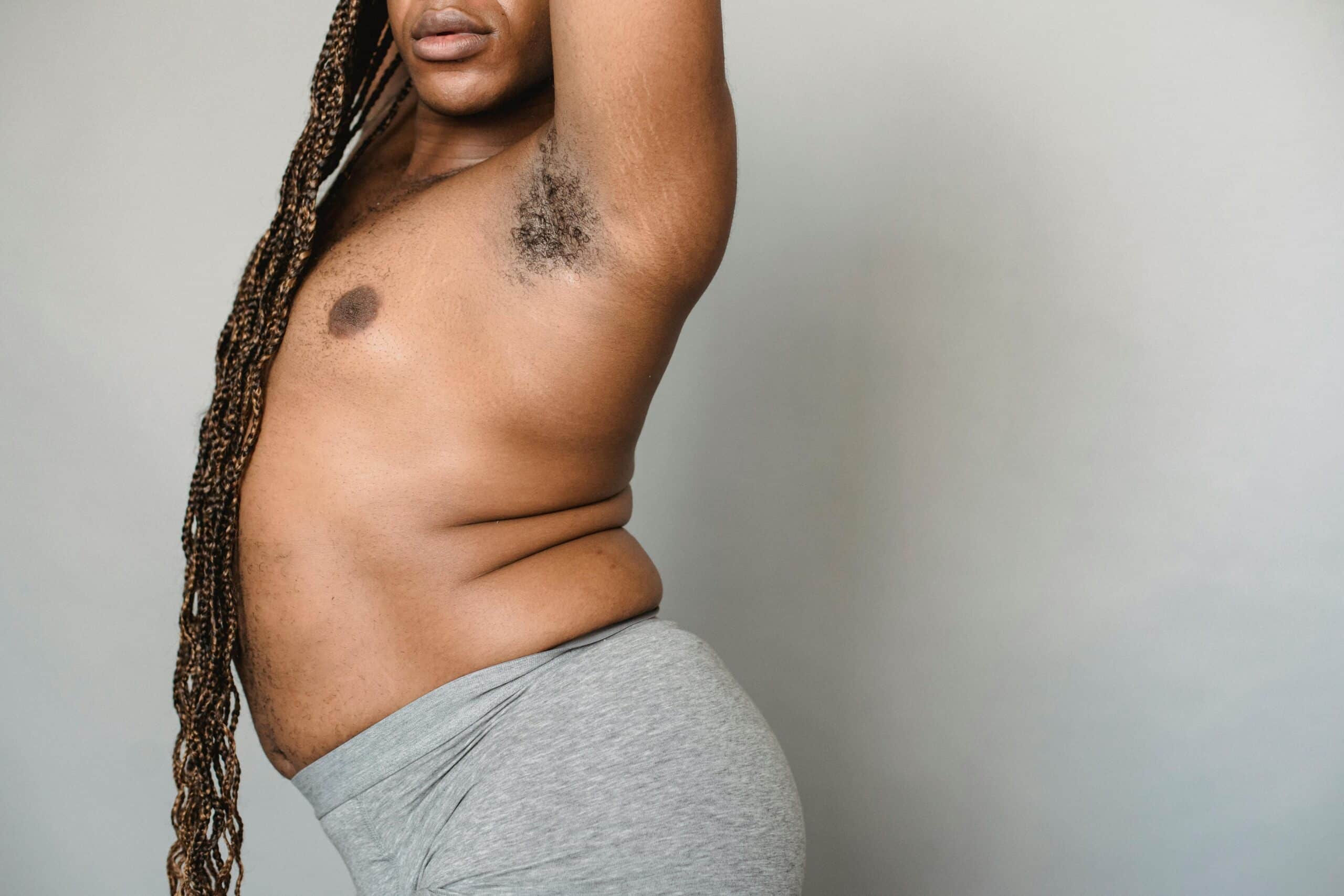
To answer that, we need to go back to the origins of the pride movement when gender binary was the norm. Let’s talk about the history of the rainbow flag, its meaning, rainbow colors, and what it stands for today for members of the community around the world.
Origins of the Pride Flag
It’s 1970 in San Francisco, CA, USA. A small group of like-minded people organize the first Pride march on the streets of San Francisco and are met with severe stigma and hostility. They lack organization, identification, and representation, not to mention the then-mindset of the American people.
The event was called the San Francisco Gay Liberation March, also known as Gay Freedom Day, and it was the spark that eventually led to the creation of what we now refer to as the pride flag. Fast-forward to 1978 and an artist and designer Gilbert Baker, who was also a Vietnam veteran. Gilbert was openly gay and a drag queen, with very influential friends in US politics.
Harvey Milk, who was an openly gay man was elected into office in the US and found himself in the position to make gay pride his priority. He tasked Gilbert Baker with representing the different groups within the community with a single symbol, a banner of peace for everyone to share.
What Gilbert came up with was nothing short of revolutionary given its simplicity and elegance. The pride flag as created by Baker in 1978 represents love and peace among people in eight different colors. The colors featured in the original pride flag are:
- Hot pink – sex
- Red – life
- Orange – healing
- Yellow – sunlight
- Green – nature
- Turquoise – art
- Indigo – harmony
- Violet – spirit
Gilbert’s flag was proudly used in the 1978 San Francisco Gay Freedom Day parade where it was presented to the public.

While the pride flag was positively received by everyone in the community, production issues quickly reared their head. At the time, it was difficult to mass-produce pink and turquoise stripes so the flag had to be redesigned.
While it would become a seven stripe flag later on and distributed by the Paramount Flag Company, the six stripe variant was created momentarily. The six stripe pride flag featuring red, orange, yellow, green, blue, and violet is the most common flag representing the LGBTQ community worldwide.
Historic fact: The reason why the pride flag has to be impromptu redesigned in the wake of “material deficit” was due to Harvey Milk’s untimely passing. The demand for the pride flag grew tremendously shortly after, leading to production issues but also to a wider and more public spotlight than ever before.
The idea behind using a rainbow pride flag came from the notion that the community is built of people of various origins, genders, sexualities, and ideologies. The pride flag, at its core, represents people, people who have gone on too far without a public identity or something to hold on to.
In 1994, 25 years after unveiling his initial flag, a new pride flag was designed by Gilbert to celebrate the anniversary of its inception. While the pride flag may seem like a cute decoration to hold on to, it is a symbol of something powerful in the queer culture – a sense of belonging and personal identity.
In 2017, Gilbert further reinvented his pride flag design with a nine stripe composition. In it, we see red, orange, yellow, green, and violet being paired with newly introduced or reintroduced lavender, pink, turquoise, and indigo stripes. The artist Gilbert Baker said in his own words that lavender symbolizes diversity in the new version of the pride flag.
As you can see, there really isn’t an established “must” when it comes to rainbow stripes found in pride flags. What matters is the message and its association with the emotional connection it represents for the people of queer culture everywhere around the world. So, what are some of the different interpretations and new flag variations of horizontal stripes found in the pride flag?

Meaning of the Pride Flag Rainbow Colors
As we’ve mentioned previously, you really cannot go wrong with how you paint your pride flag. But, there are various “official” interpretations of the flag which found their way into the movement and have been used in various pride events and gatherings throughout the years. Let’s take a look at some of them to see how many different genders, sex, and minority groups we can identify. Think of this as a quick primer into vexillology (which is actually the science of flags!).
Philadelphia Pride Flag

The Philadelphia pride flag was created by a marketing firm that collaborated with the community for a public event. Their flag is an eight stripe flag featuring black and brown stripes.
The reason why they chose black and brown stripes is to raise awareness toward the issues of race and color in the LGBTQ community. While black stands for the black community, brown is also there to represent other queer people in the movement. The city of Philadelphia used the flag with black and brown stripes publicly in 2017.
Sao Paulo Pride Flag

The Sao Paolo progress pride flag was used in 2018 during its Love Fest pride parade. It features a nine stripe design, which is one of the most complex pride flags we’ve seen so far. In it, the original Gilbert design is paired with the white stripe in the middle.
This stripe represents people and diversity in all colors, as was the original pride flags idea in Baker’s design. The pride parade was a resounding success and the flag remains as one of the most colorful and meaningful interpretations of the original design from 1978.
Progress Pride Flag

Daniel Quasar is a designer who combined the best of all worlds in his 2018 progress pride flag design. Daniel mixed elements from the Philadelphia flag with the trans pride flag colors, creating a unique vision for the flag. The progress pride flag is a six stripe flag with a chevron added to it with pink, light blue, brown, and black colors respectively.
This is one of the most impactful pride flags to have been created so far, as it openly includes not only minorities and people of color but also people living with HIV/AIDS and those taken by the illness. The progress pride flag found recognition and acceptance on every social media platform, education network online, and news outlet which covered its unveiling in 2018.
Intersex People Pride Flag by Valentino Vecchietti

One of the latest examples of pride flags was created in 2021 by Valentino Vecchietti, a member of the Equality Rights UK group. What separates this flag from others is its reliance on geometric objects and not only horizontal stripes.
Vecchietti integrated a yellow triangle and a purple circle into the design. The role of the yellow triangle and the purple circle is to show support and give a voice to the intersex people around the world. It speaks to the idea that it is okay to experience romantic attraction and pursue it openly if you’re not gender binary and identify as something more. Even without Baker’s hot pink, this progress pride flag is a powerful symbol. The progress pride flag as created by Vecchietti is available for purchase on his website.
“It takes no compromise to give people their rights…it takes no money to respect the individual. It takes no political deal to give people freedom. It takes no survey to remove repression.” – Harvey Milk
As years went by, various identities have come forward within the LGBTQ+ community (hence the “+:). This has prompted many to create new original flag designs for their communities, with a new flag being created for each new group.
A great example is the transgender pride flag which consists of a light blue color and colors pink and white. It is a symbol for trans people to identify with, with light pink standing for a traditional baby girl color and blue being for baby boys. The white symbolizes the neutral area between the two genders and the experiences trans people go through.

The trans flag is only one of the many flags stemmed from the original pride flag and it stands just as proudly as the one which inspired it.
Pride Flag and Pride Month
Pride month is an annual celebration of all things LGBTQ+ and it takes place across the globe in memory of the Manhattan Stonewall riots of 1969. As we’ve talked about, being gender neutral or of undefined gender was not something that was widely accepted at that time. The Stonewall riots ended in police violence and it was quite taboo to be a part of the LGBT movement in the 70s until it gained traction at the end of the decade. The pride flag is a quintessential element of pride and it is interpreted in various ways worldwide during the parade.
“I love going to cities around the world and seeing the rainbow flag” – Gilbert Baker
The parties involved in pride, LGBTQ+ or not, use the pride flag in support of people who are oppressed, marginalized, and stigmatized for their lifestyles. You’re likely to see a new flag pop up every time you visit a parade in your local town or area, such as the bisexual pride flag or the trans flag being displayed proudly during the event. Being sexually attracted to someone you like regardless of different gender, sexual orientation, beliefs, or lifestyle and being okay with it is why the pride flag was created in the first place.
Pride Flag and Support in Pop Culture
Given how popular social media has become over the years, it has become very easy for people to speak up in support of LGBTQ+ communities. The easiest and loudest way to do that is through imagery, so celebrities, companies, and influencers use the pride flag to spread goodwill and positive energy throughout their own communities.
Some of the most outspoken supporters of LGBTQ+ are Lady Gaga, Tailor Swift, and Demi Lovato among hundreds of other actors, musicians, writers, and even corporate personalities and entrepreneurs. They share various flags on their social media platforms, such as the transgender pride flag, the asexual flag, or even demisexual flag versions depending on their own experiences.
— Taylor Swift (@taylorswift13) June 1, 2021
Whether they’re male, female, binary, or queer people, it has become something of a tradition for public personalities to be outspoken in favor of LGBTQ+ communities, especially during the month of June (Pride). With the new pride flag being so easily recognizable thanks to Baker’s elegant design, it’s very easy to come out as an ally and spread love on the web. This is the true strength of the new pride flag and those that came before it ever since 1978 and its original design.
Happy #PRIDE Month! I’m a proud ally to the LGBTQ+ community and will continue to use my platform to advocate for their rights and equality. Sending love to everyone in the community including those who cannot openly live their truth. You are so loved! pic.twitter.com/aenrTiwZNS
— AJ McLean (@aj_mclean) June 1, 2021
A Flag to Represent People Around the World
Whether you agree with its message or not, it’s undeniable that LGBTQ pride has only benefited from the pride flag as it was created by Gilbert Baker in 1978. What the flag means, in reality, is that it is okay to feel sexual attraction to someone you like despite them being of the same gender identity as you. Over the years, many variations on the idea have come out, such as the lesbian flag, the agender pride flag, and the aromantic pride flag, coming out just like the members of their communities continue to do.
Only time will tell how the pride flag, the movement it stands for, and the people around it will grow in the following years. The fact that the original flag has gone mostly unchanged in its style and color choice speaks to its power and meaning as a symbol of something more.





